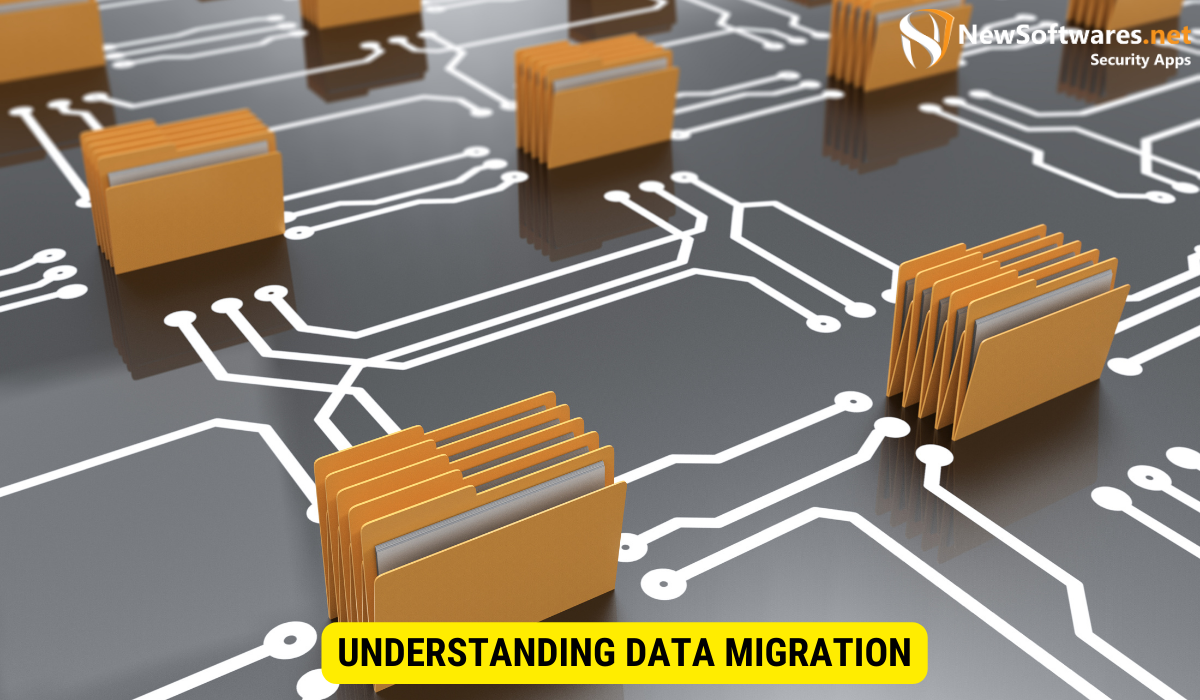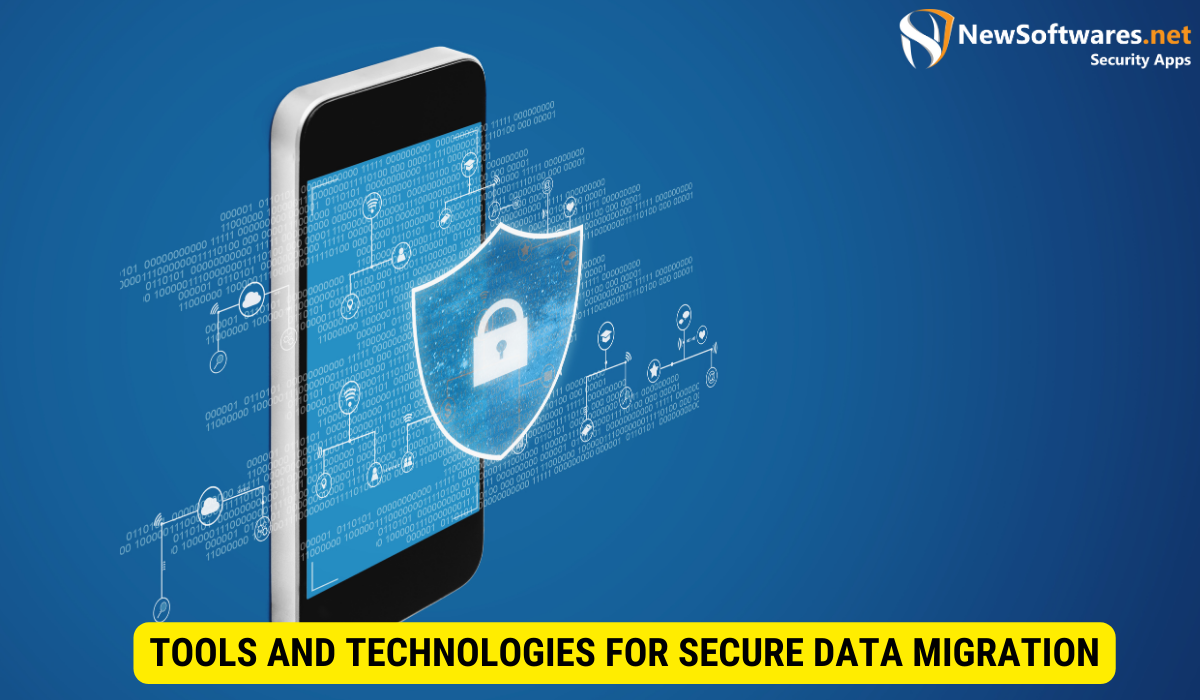Executing a secure data migration process involves planning, setting clear goals, selecting the right strategy and technology, and implementing robust security measures. Data protection, encryption, and careful tool selection are essential elements in ensuring a successful and secure data migration.
Data migration is a critical process that involves transferring data from one system to another without compromising its security. In today’s digital age, organizations frequently need to move vast amounts of data between different platforms, databases, or storage systems, making data migration an essential task. However, the complexity and security concerns associated with data migration make it crucial for businesses to have a robust strategy in place.
Understanding Data Migration

Data migration refers to the process of moving data from one location to another, such as from an old database to a new one, a legacy system to a modern platform, or on-premises servers to the cloud. It involves extracting, transforming, and loading (ETL) data while maintaining data integrity and security.
Defining Data Migration
Data migration is a complex and multifaceted process that requires careful planning and execution. It involves not only the physical movement of data but also the transformation and validation of data to ensure its accuracy and consistency in the new environment.
During the data migration process, data is extracted from the source system, which could be a database, a file system, or any other data storage system. The extracted data is then transformed to meet the requirements of the target system, which may involve data cleansing, data mapping, and data enrichment.
Once the data has been transformed, it is loaded into the target system, which could be a new database, a cloud-based storage solution, or any other data repository. Throughout the entire process, data integrity and security are of utmost importance to ensure that the migrated data remains reliable and protected.
Importance of Data Migration
Data migration plays a vital role in enabling organizations to adopt new technologies, improve operational efficiency, and optimize data accessibility. By migrating data from legacy systems to modern platforms, businesses can take advantage of advanced features and functionalities that were previously unavailable.
One of the key benefits of data migration is the consolidation of data. Organizations often have data scattered across multiple systems, making it difficult to access and analyze. By migrating data to a centralized location, businesses can streamline their processes and gain a holistic view of their data, leading to better decision-making and improved operational efficiency.
Data migration also allows organizations to optimize data accessibility. Legacy systems may have limited capabilities when it comes to data retrieval and analysis. By migrating data to modern platforms, businesses can leverage advanced analytics tools and technologies to extract valuable insights from their data, enabling them to make data-driven decisions and gain a competitive edge in the market.
Furthermore, data migration enables businesses to ensure data integrity and security. During the migration process, data is carefully validated and verified to ensure its accuracy and consistency. Additionally, data security measures are implemented to protect sensitive information from unauthorized access or breaches. By migrating data to a secure and robust environment, organizations can mitigate the risks associated with data loss or compromise.
In conclusion, data migration is a crucial process that allows organizations to leverage new technologies, improve operational efficiency, and optimize data accessibility. By carefully planning and executing data migration, businesses can consolidate their data, streamline their processes, and make informed decisions based on accurate and up-to-date information.
Planning for a Secure Data Migration
Identifying Data for Migration
The first step in planning a secure data migration is to assess the data you want to transfer. This involves a thorough examination of your organization’s data landscape, including the various datasets that need to be migrated. It is important to identify the most critical datasets that require immediate attention and prioritize them accordingly. By doing so, you can ensure that the most important data is given the highest level of security and protection during the migration process.
In addition to identifying critical datasets, it is also essential to consider data retention policies. These policies outline how long specific types of data should be retained and when they can be safely deleted. By taking data retention policies into account, you can ensure that only relevant and necessary data is migrated, reducing the risk of transferring unnecessary or outdated information.
Furthermore, determining the necessary data cleansing and transformation processes is another crucial aspect of data identification. Data cleansing involves removing any inconsistencies, errors, or duplicates from the datasets, ensuring that the migrated data is accurate and reliable. On the other hand, data transformation involves converting the data into a format that is compatible with the destination system. This step is necessary to ensure seamless integration and optimal performance of the migrated data.
Setting Migration Goals
During the planning stage, it is crucial to establish clear migration goals that align with your organization’s overall objectives. These goals serve as a roadmap for the data migration project and provide a clear direction for the entire process.
One of the primary goals of a data migration project is to ensure the timely transfer of data. Setting targets for migration timelines helps create a sense of urgency and ensures that the migration process does not drag on indefinitely. By defining specific timelines, you can effectively allocate resources and manage the project’s progress.
Data accuracy is another essential goal to consider. It is crucial to ensure that the migrated data is accurate, complete, and consistent with the original datasets. This requires careful validation and verification processes to identify and rectify any errors or discrepancies that may occur during the migration process.
Minimal disruption to business operations is also a critical goal when planning a data migration. It is essential to minimize any potential downtime or interruptions that may occur during the transfer of data. By setting this goal, you can develop strategies and contingency plans to mitigate any risks and ensure a smooth transition.
Overall, setting clear migration goals is vital for the success of the data migration project. These goals provide a framework for decision-making, help evaluate the project’s progress, and ensure that the migration aligns with the organization’s objectives.
Data Migration Strategies
Choosing the Right Data Migration Strategy
There are several data migration strategies available, including big bang migration, trickle migration, and parallel migration. Each strategy has its benefits and considerations, depending on the scale and complexity of the data migration project. It is essential to align the chosen strategy with your organization’s needs and capabilities.
Common Pitfalls in Data Migration Strategies
While data migration can bring numerous benefits, it also poses various challenges. Some common pitfalls include data loss, incomplete or inaccurate migration, system downtime, and failure to meet migration goals. By understanding these challenges and planning accordingly, businesses can mitigate risks and ensure a smooth and secure migration process.
Ensuring Data Security During Migration
Data Protection Measures
During data migration, it is crucial to prioritize data security. Implement robust security measures, such as access controls, encryption, and user authentication, to safeguard sensitive data. Regularly monitor and audit your data migration process to identify and address any security vulnerabilities.
Role of Encryption in Data Migration
Encryption is a key component of data migration security. By encrypting data during transit and at rest, you can ensure that even if intercepted, the data remains unintelligible to unauthorized users. Leverage encryption algorithms and protocols to protect sensitive information, such as customer records, intellectual property, or financial data.
Tools and Technologies for Secure Data Migration

Overview of Data Migration Tools
There are various data migration tools available in the market, each offering different features and functionalities. These tools facilitate efficient and secure data transfer, automate the ETL process, and provide monitoring and reporting capabilities. Evaluate your organization’s requirements and select a data migration tool that aligns with your specific needs.
Selecting the Right Technology for Your Needs
Choosing the right technology stack is vital for ensuring a secure and successful data migration. Consider factors such as scalability, compatibility with existing systems, data volume handling capabilities, and ease of integration. Engage with experts or consult reputable sources to gain insights into the best technology options for your specific migration requirements.
Key Takeaways
- Data migration involves moving data from one location to another while maintaining data integrity and security.
- Planning is crucial for a successful data migration, including identifying the data for migration and setting clear migration goals.
- Choosing the right data migration strategy and technology is vital to ensure a secure and efficient process.
- Data protection measures and encryption play a significant role in safeguarding data during migration.
- Data migration tools provide automation, monitoring, and reporting capabilities, streamlining the migration process.
FAQs
-
What are the key steps in planning for a secure data migration?
The key steps in planning for a secure data migration include identifying the data for migration, setting migration goals, and selecting the right data migration strategy and technology.
-
How can data encryption help in securing the data during migration?
Data encryption ensures that even if intercepted, the data remains unintelligible to unauthorized users. By encrypting data during transit and at rest, organizations can protect sensitive information from potential security breaches.
-
What are some common challenges in data migration strategies?
Data loss, incomplete or inaccurate migration, system downtime, and failure to meet migration goals are some common challenges in data migration strategies. These challenges can be mitigated by careful planning and taking necessary precautions.
-
What factors should be considered when selecting a data migration tool?
Factors such as features and functionalities, scalability, compatibility, data volume handling capabilities, and ease of integration should be considered when selecting a data migration tool.
-
How can businesses ensure data security after data migration?
Businesses can ensure data security after data migration by implementing ongoing data protection measures, including regular security audits, employee training, and monitoring for potential security vulnerabilities.
Conclusion
Data migration is a complex process that requires careful planning and execution to ensure data security. By understanding the importance of data migration, setting clear migration goals, choosing the right strategy and technology, and implementing robust security measures, businesses can execute a secure data migration process. Remember to perform thorough testing and monitoring throughout the migration to identify and address any issues promptly. With the right approach, data migration can be a successful endeavor that empowers organizations to leverage data effectively and achieve their goals.
